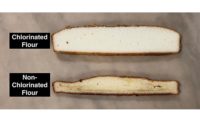Good, clean and healthy: Are you mislabeling or misrepresenting your products?

A cursory glance at grocery store shelves confirms: meeting consumer expectations for “clean” food labeling is here to stay. Whether a consumer’s interpretation of clean is simply no artificial ingredients or colors, or expands beyond that into an avoidance of pesticide or antibiotic residues, people are more mindful of the origin and manufacturing quality of their foods like never before.
Manufacturers, in turn, are formulating and labeling products to meet consumer demands and provide greater transparency as to what a product contains and how it is processed, but at what risk? Inadvertent and inaccurate labels or exaggerated claims could be challenged by both FDA and consumer action groups. Understanding FDA’s regulatory definitions, and how to work within their boundaries is paramount in today’s environment.
From farm to table to fork, consumers want to know where their product was sourced; how it was manufactured; what ingredients it contains, and in what quantity. There is a lot riding on a product’s labeling. With a limited amount of real estate, it is important to ensure required information is correctly presented, with the remaining space dedicated to the inclusion of appropriate claims.
Making a processing claim such as "clean," "organic," or "non-GMO" can be tricky, particularly considering today’s global sourcing of ingredients. Another challenge is an incomplete understanding of the meaning of these terms or a lack of federal guidance and definition. For example, what does “good” or “clean” really mean? FDA has no regulatory definition for these terms as they do for terms such as “healthy,” “organic,” and “a good source of.” Claims may imply that a product is advantageous, but is it really? The labeler is responsible for making claims that are truthful and not misleading, even if there is no firm definition for the claim.
Whether the consumer infers from the label that something has been removed to make the product “clean,” or something is added to enhance its “goodness,” or that the product was produced in a certain manner such as with organic farming methods, these terms, including those with regulatory definitions, may be up to the interpretation of the consumer. For example, in cases where a “clean” label is equated to a negative claim (“no preservatives”) there must be no presence of any preservative, natural or otherwise, including incidental additives. Likewise, FDA is watching negative claims such as “no artificial colors.” FDA considers that any added color in a food is not natural, even if it is a naturally sourced color, such as beet juice. Inclusion of any color would invalidate the ability to make the “no artificial colors” claim.
Another tricky area is that of incidental additives. Specifically, 21 CFR 101.100 exempts from label declaration incidental additives that are present in a food at insignificant levels, and which have no technical or functional effect in that food. It is important to note that problems arise when blending several foods together that contain the same ingredient exempted from labeling. In some cases, that incidental food may now be present at a functional level, in which case it must now be declared on a label. Ask your suppliers for a full breakout of the product(s) you are buying which will include substances used in the foods processing such as antioxidant preservatives. Do not merely rely on a suggested ingredient statement which may omit items such as these.
It is important to note that food labelers are ultimately responsible for the accuracy of their labels, including ensuring claims are substantiated and not misleading. Diligent documentation and record keeping are necessary. That may mean confirmation by independent analysis whereby a consultant reviews and verifies supplier information, verifies if ingredients are present in functional amounts, and determines if labeling and claims meet FDA’s regulatory requirements.
An additional step is often independent verification of claims by a qualified food testing laboratory. Allergens, cross-contamination, functional amounts of foods, and more will be assessed via laboratory testing in cases of litigation. Arming yourself with the best information possible before designing your claims can go a long way in a legal defense. By only marketing claims that can be verified through independent organizations such as consulting firms and reputable testing laboratories, manufacturers and labelers can have greater peace of mind.
Despite the best efforts to ensure a product is labeled correctly, consumers may still misinterpret an appropriately designed label. Remember that in FDA’s eyes, “clean” doesn’t equate to “good," and “organic” doesn’t indicate “healthy.” Understanding how to market your products in such a way that a “reasonable consumer” would not be misled is a must, particularly when making undefined claims.
As manufacturers and labelers, ensure due diligence before your products go to market. That way, should FDA ever come calling, you can come “clean” with your “good” regulatory compliance status.
Looking for a reprint of this article?
From high-res PDFs to custom plaques, order your copy today!





